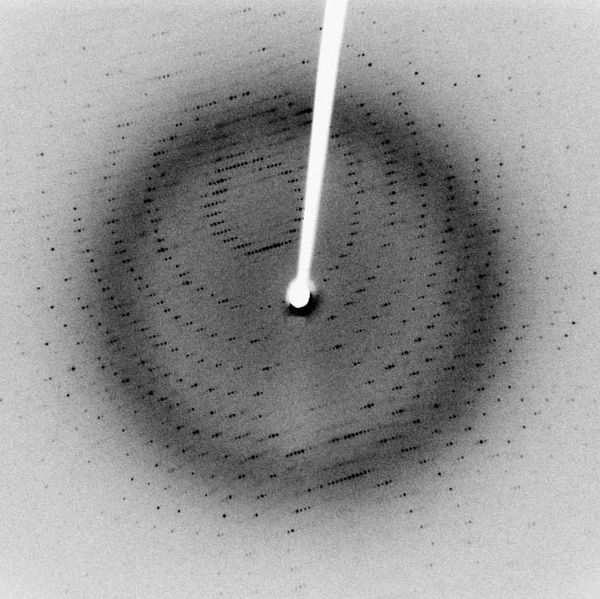A way to conduct X-ray diffraction studies to understand the structure of materials, but without first needing to make crystals of the chemical, has been discovered by scientists in Japan.
X-ray diffraction is arguably the most powerful way chemists have of looking at the structure of molecules. Rosalind Franklin's x-ray data helped James Watson and Francis Crick crack the structure of DNA;  Dorothy Hodgkin used x-rays to see how the atoms are arranged in penicillin and vitamin B12; and the 2013 Nobel prize in chemistry went to researchers studying he structure of proteins using crystallography.
Dorothy Hodgkin used x-rays to see how the atoms are arranged in penicillin and vitamin B12; and the 2013 Nobel prize in chemistry went to researchers studying he structure of proteins using crystallography.
But all of these studies require crystals, and not all molecules will crystallise - lots of interesting organic molecules, for example, are liquids or sticky gums. But Yasuhide Inokuma and his team at the University of Tokyo have come up with a way round the problem.
They use a molecular sponge to soak up the molecules and hold them in an ordered array. The sponge, or metal organic framework, is made from metal ions joined together in an ordered, porous structure by organic linkers. The molecules being studied all bind to the sponge in the same orientation - similar to how they might pack together in a crystal - which is crucial for x-ray analysis.
The technique only requires a tiny amount of material as well - less than 0.1 microgram. That could make it useful for analysing things like molecules extracted from plants or marine sources, which are often starting points for discovering new drugs, but are usually only produced in vanishingly small quantities.










Comments
Add a comment